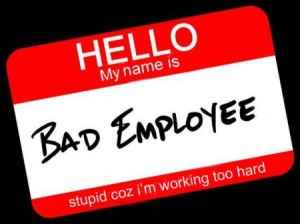By Steve Moran
I’m just leaving a committee meeting / brainstorming session that was led by somebody who makes their living as a leader of people in a not-for-profit setting (not senior living).
The goal of this particular gathering was to brainstorm ideas to make the organization better and to get participants in the meeting to volunteer to be leaders and helpers.
Meeting Structure
The meeting started out with a lot of yelling to get people’s attention. In fairness, it was a bit of a challenge because the meeting was over a meal, and there were kids in the room. It began with a review of the history of the organization and a bit of a celebration of some past leaders.
Then came the discussion …
“What do you want to do?”
“Give me your ideas ….”
A few things ended up on the board, but nothing that would really transform the organization. I tried to help, but have no significant influence capital in the organization, even though the role I play as a leader is significant. It garnered a response from the leader but would have been much much better if the question had been answered by the participants.
The bottom line for the leader was that she needed/wanted more volunteers.
What Will You Do?
The final part of the meeting was to ask the participants to come up to the whiteboard and write down what project they would be willing to take on. Not surprisingly, no one went up and wrote anything.
Wrong Conclusions
I know this leader fairly well, and I am near 100% sure that she went home feeling like the meeting was mostly a failure, which is a correct assessment. She could have sent out a text message or email and likely gotten a better response.
I also know her well enough to know that in that proper conclusion, she completely missed why it was a failure. She already believes that the people in the crowd are flakes, simply not really committed to the cause, even though they are mostly the ones that would benefit from making it better.
A 100% Miss
Her reasoning on why it failed is a 100% miss. That meeting failed because it was led badly. There was no high level thinking, no asking what a great program looks like, no asking if there are things that are being done that should be stopped, no conceptual ideas at all.
Worst of all, most frustrating for me: I could have helped, but didn’t and won’t. This leader hates even the suggestion they are doing it wrong, or even that it could be done better.
Lessons to Be Learned Over and Over Again
Hardly anyone loves failure, particularly with that failure being their own fault. And worst of all is when it takes someone else to help you see it. She and too many leaders would rather stay in failure mode, believing false narratives, than be willing to say, “Maybe I got this wrong and need to think about it differently.”
Staffing and Occupancy
Right now in senior living, I see leaders and organizations that are suffering horribly with high staff turnover and low occupancy, and those two things mean neutral or negative cash flow, which means stress and misery for everyone but in particular for the leaders.
It does not have to be this way. It is 100% possible to have high occupancy, low turnover, and people standing in line to move into your communities and go to work for your organization.
It starts with being willing to acknowledge that you as the leader need to make substantial changes. If this is you, I can help. I would love to talk about it.








